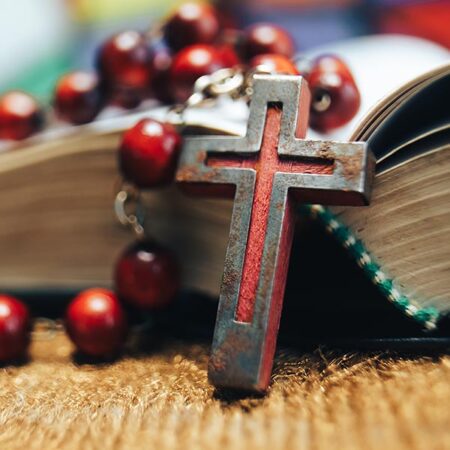Although a longstanding tradition attributed the rosary to Saint Dominic and the Dominican Order, the practice of using beads to count prayers predates the Dominicans by a few hundred years. In fact, it seems that what we now think of as the rosary (which means “garland of roses”) was first developed by illiterate peasants and religious brothers and sisters as a way of offering 150 “Our Fathers” to replace the praying of the 150 psalms in the Divine Office.
The practice of reciting 150 Hail Marys (which was later subdivided into 15 decades of 10 Hail Marys) arose during the late Middle Ages. Devotion to the rosary began to flourish in the nineteenth century, especially as new devotions to Mary began to spread throughout Europe and the New World. An annual liturgical celebration of Our Lady of the Rosary was introduced into the Church calendar in 1573 and it has been observed on the date of October 7 since 1913.
In the apostolic letter On the Most Holy Rosary, Pope Saint John Paul II not only added five new mysteries to the traditional fifteen, but he also reminded Catholics that the rosary is, at its core, an opportunity to go deeper into the life of Jesus: “The rosary, though clearly Marian in character, is at heart a Christocentric prayer … It has all the depth of the Gospel message in its entirety, of which it can be said to be a compendium. It is an echo of Mary’s prayer, her perennial Magnificat … With the rosary, the Christian people sit at the school of Mary and are led to contemplate the beauty of the face of Christ and to experience the depths of his love” (no. 1).

